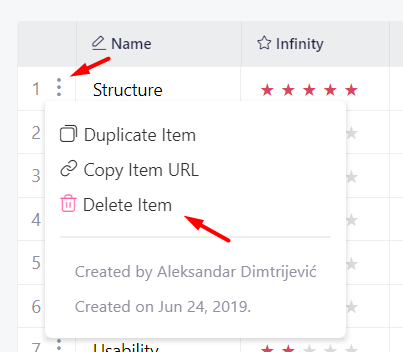Product Differentiation - What's Your Competitive Edge
Although often defined as a marketing process, product differentiation is much more than that. It is related to every aspect of the product and every part of your team, which is why it belongs right here, in the chapter about product strategy.
Unless you have an incredibly unique idea for a product that nobody has thought of before, chances are you’re going to enter a competitive market with lots of similar products already available. Product differentiation should answer the following question — what does your product offer that other similar products on the market don’t? What is the unique value of your product that makes it stand out from the competition?
This kind of differentiation can be focused on any aspect of your product. Maybe you’re planning to offer a better, more beautiful design. Maybe you’re going to develop unique features that your competitors don’t have. Or, you’re simply planning to offer a lower price and better customer support.
All these aspects are an opportunity for product differentiation, and ultimately product differentiation should motivate the customer to choose your product over another one.
Ideally, product differentiation should explain to your target audience how your product offers everything similar products have and more.
Competitive Analysis
To be able to differentiate your product from the competition, you first need to know who your competitors are and what they have to offer. This is called competitive analysis.
First of all, you’ll need to create a list of your ten biggest competitors. After you compile that list, it’s time for a thorough analysis. You’ll need to define all relevant factors in your niche such as:
- Feature segments
- Design
- Company size
- Prices
- Website traffic
- Number of users
- Customer support
- Other
One of the most important things to analyze when it comes to SaaS products are the feature segments. Feature segments are groups of features that are commonly found in your niche. Defining them will help you create initiatives and build your product roadmap.
To define the feature segments in your niche, you’ll need to do the following steps:
- Find and note down all your major competitors
- List all the features these tools have
- Group those features into segments
Setting a Competition Grid in Infinity
Once you have your feature segments and a list of competitors, it’s time to create a competition grid where you will visually present your analysis. You can do that by using a table in Infinity.
Here’s a product differentiation example from Infinity.
- We created feature segments such as Structure, Views, Attributes, Customization, Usability, Design, Pricing, etc. Each segment is a separate item.
- We created a column for each competitor (including Infinity) in the shape of the ‘Rating’ attribute.
- In each segment, we rated tools on how accomplished they are in this category — one star denoting poor performance and five stars denoting excellent performance.
For example, Infinity gets five stars for ‘Structure’ because of its flexible structure and powerful folders and subfolders, but gets a 3-star rating for ‘Collaboration’ because it doesn’t have advanced collaboration features like live chat.
Check out the Infinity competition grid below:

To create your own competition grid in Infinity, you can use the Product Management template. Here's how:
- Step 1: Open the Product Differentiation subfolder located in the Product Strategy folder.
- Step 2: Delete all items in the first column to get a clean table you can fill out with your data. You can do it by clicking the three dots symbol next to the item.

- Step 3: Add new items with your feature segments and other differentiation factors.
- Step 4: Edit the column names. Your tool should be in the first column, followed by your competitors. Just click the name of the column to edit it.
- Step 5: Rate your tool against your competitors by filling in the stars in the columns.
Once you set up the competition grid, you will be able to see your competitors’ weak points. This will also help you discover how your product fits into the market and how it can stand out — by its design, features, price, or something else.
By using feature segments, you’ll be able to identify your product’s potential weak points, which will help you understand how you can improve the product to outperform competition and give your users something unique and valuable.
Preview or download the Project Management template to use the premade competition grid as the basis for your own.
Product Positioning - How Your Product Fits in the Market
How to Set Smart, Measurable Product Goals
Product Management



